Cartoon of First Sanford & Cape Porpoise Trolley - August 19, 1899.
Open Trolley Car 13, a "Breezer," is featured. Car 13 carried 100+ passengers!
Copy by N. H. Thurston, Portland, ME, from the Central Maine Power
Coll. #2115, Box 360, Folder #5, at the Brown Research Library at
Maine Historical Society.
Updated 11-8-2025
Initially, the S&CP ended at the B&MRR overpass
bridge on Summer Street in Kennebunk. A few weeks
later, the construction of the line all the way to the pier
in Cape Porpoise was completed.
Kennebunkport-Arundel-Biddeford
map from the 2015 NEERHS book,
"The Illustrated Atlas of Maine's Street
& Electric Railways 1863-1946"
Sanford & Cape Porpoise Railway Company summary/images from the book, "Atlantic Shore Line Railway" by O. R. Cummings, presented as Transportation Volume 4 by the Connecticut Electric Railway and the National Railway Historical Society-Connecticut Chapter - June 1950 - Re-issued January 1957. And text/images are also taken from an O. R. Cummings book, "Atlantic Shore Trolleys", Bulletin No. 2, New England Electric Historical Society, January 1, 1966. Text may also be from O. R. Cummings' 1999 publication, Images of America, York County Trolleys. Additional text is also taken from an insert O. R. Cummings wrote in "The Atlantic Shore Line Railway and Successors" - Historical Summary-1900-1949. O. R. Cumings Collection at the Seashore Trolley Museum. A few images are from the Kennebunkport Historical Society and Kennebunkport Conservation Trust, with some also from the Penobscot Marine Museum. Additional images will be credited.
To see the online version of the 1957 book, Atlantic Shore Line Railway at Bangor Public Library
Click Here: for the post on the Mousam River Railroad 1892-1899
Click Here: for the post on the Sanford & Cape Porpoise Railway 1899-1904
Click Here: for the post on the Atlantic Shore Line Railway 1900 -1910
Click Here: for the post on the Atlantic Shore Railway 1911-1923
Click Here: for the post on the York Utilities Company 1923-1949
Click Here: Walter R. Jackson (1904-1989) - Former Atlantic Shore Railway Employee Interview 1988
Click Here: Ross W. Stahl (1912-2002) - Longtime Kennebunk Resident - Interview 2001
The Sanford & Cape Porpoise Railway (S&CP) was organized by the Goodalls in Sanford and chartered on October 6, 1897. It proposed to build from Central Square (Sanford), through the outlying districts of Alfred, Lyman, West Kennebunk, Kennebunk, Kennebunkport, and Cape Porpoise, 20.3 miles away.
To the tidewater terminal at Cape Porpoise, it was planned to bring coal in schooners and barges for transfer to Sanford via the new electric railway, and from interchanges (spur tracks) with the Boston & Maine Railroad at Kennebunk (Summer Street), and West Kennebunk. The S&CP intended to run a direct carload freight service to points along its route.
The cost for passengers (fare rate) in 1899/1900 to travel from Sanford/Springvale to West Kennebunk was 20cents - one way. The fare to travel to Kennebunk was 25cents - one way. The fare to Cape Porpoise was 35 cents - one way.
Continuing through West Kennebunk, the trolley line paralleled the old highway through Kennebunk village to the Town House Junction (Terminal) at Kennebunkport and thence again over private right-of-way to Cape Porpoise. A long wooden trestle, intended to serve also as a coal wharf, was built across the harbor to Bickford's Island, where a large casino was erected.
On August 15, 1899, the operation began on 14.6 miles between Sanford and West Kennebunk. Passenger service to the B & M Station in Kennebunk commenced four days later on the 19th with No. 13, a new Jackson & Sharp 15-bench open trolley, leaving Sanford at 7:30 a.m. with 100+ passengers aboard and arriving at Kennebunk about an hour later. More than 1,000 people traveled on the route that first day. Initially, the tracks in Kennebunk ran through Fletcher Street to Main Street. In mid-November, the rest of the route to Cape Porpoise was complete (5.83 miles). On November 14, cars were rerouted to the newly completed track on Storer Street and on Main Street in Kennebunk.
This is the summary of the electric railways that operated
based out of Sanford, Maine, 1893-1949
2015 publication by NEERHS
"The Illustrated Atlas of Maine's
Street & Electric Railways 1863-1946
Click Here - for the post that focuses on the West Kennebunk, Kennebunk, and Arundel portion of the
Sanford & Cape Porpoise Railway 1899-1927
Click Here - for the August 25, 1899, Sanford Tribune Newspaper, three-page article on the S&CP
West Kennebunk B & M Railroad Station photo courtesy of
Kennebunkport Historical Society via Sharon Cummins
Sun Journal - August 21, 1899
Biddeford & Saco Journal - August 19, 1899
Laying Railroad Tracks into Cape Porpoise Square
1899 - From the Forster Leavitt, Sr. Collection
courtesy of Mike Leavitt
Biddeford & Saco Journal - September 5, 1899
Biddeford & Saco Journal - September 20, 1899
Journal Tribune - October 20, 1899
On November 20, a local car began operating between the B & M station at Kennebunk and Cape Porpoise. It was not until the spring of 1900, after the ice was out of the harbor at Cape Porpoise, that the hauling of coal to the Sanford mills began.
This is the Sandford & Cape Porpoise waiting station on
Summer Street. Constructed in 1902 on the northwesterly
end of the bridge passing over the B&M Railroad, Summer
Street, in Kennebunk. It was designated as the electric railway's
Kennebunk Station, complete with a lunch counter
and restroom facilities. It was a short walk across the
street and down the hill to the B&M Kennebunk railroad station.
O. R. Cummings Collection at the Seashore Trolley Museum
2009_2_42_044
The first page, of two pages, lists the stops, turnouts, and distances
1908, for the Atlantic Shore Line Railway:
Springvale to Kennebunkport, and on to Biddeford.
2015 publication by NEERHS
"The Illustrated Atlas of Maine's
Street & Electric Railways 1863-1946
The second page of two pages lists the stops, turnouts, and distances
1908, for the Atlantic Shore Line Railway:
Springvale to Kennebunkport, and on to Biddeford.
2015 publication by NEERHS
"The Illustrated Atlas of Maine's
Street & Electric Railways 1863-1946
Once the remaining section of tracks from Summer Street in Kennebunk to the Cape Porpoise Pier was completed in mid-November, the S&CP released the Daily Schedule to the Trolleys.
Biddeford & Saco Journal - November 27, 1899
That summarizes the opening of the line in 1899. Next, we'll focus on the Town House Junction (Terminal) and the line to Cape Porpoise.
The first waiting station at Town House Junction was originally
the schoolhouse for District 5 in Kennebunkport, seen on the right.
It was moved across the road and had some alterations made to
the roof area. See the photo below.
Photo courtesy of the Kennebunkport Historical Society
Here is the former schoolhouse with its alterations made to accommodate
visitors while they await a trolley or when they exit a trolley. I was able to
locate another photo of open trolley No. 13 ❤
O. R. Cummings Collection at the Seashore Trolley Museum
2009_2_42_053
Entering Dock Square, Kennebunkport, from Spring Street, is No. 13
of the S&CP. No. 13 was the first trolley on opening day to carry
passengers to the B & M station in Kennebunk in 1899. In 1900,
the Atlantic Shore Line Railway (ASL) built a short line of track
from Town House Junction to the Dock Square Bridge (Kennebunk River).
The ASL was owned by the Goodalls in Sanford, Maine, as was the S&CP.
Eventually, the S&CP was absorbed by the ASL.
O. R. Cummings Collection at the Seashore Trolley Museum
2009_2_7_11
Once, the Atlantic Shore Line (ASL) was created by a group of individual directors and officers of the Sanford & Cape Porpoise Railway and the Mousam River Railroad. It would be but a matter of time before the ASL became the dominant member of what would become the railway family with other York County electric railways. The official authorization by the Maine legislature was on March 13, 1903, and on April 1, 1904, the consolidation of the Sanford & Cape Porpoise Railway, the Mousam River Railroad, and the Sanford Power Company was completed, and they all merged with the Atlantic Shore Railway.
The Atlantic Shore Line's first route in 1900 extended from Town House
Corners to Dock Square and the bridge at Kennebunk River in Kennebunkport.
The S&CP joined the Atlantic Shore Line (ASL) in using the new
waiting station at the intersection of North Street and Arundel Road
at Town House Junction. The car on the left has arrived
from Dock Square. The car on the right is headed to Sanford. This is an
early image - c 1901/02. The home and barn behind the waiting station
at the forefront were moved across Arundel Road, to the right,
in 1903 to make room for a new brick office building that would include
a large carhouse, repair shop, and offices for the ASL.
O. R. Cummings Collection at the Seashore Trolley Museum
2009_2_42_054
Angie Gott is holding a photo of her great-grandfather, Walter
Benjamin Drown. He was a conductor on the trolleys of the ASL.
He met his wife in 1909 when she was a passenger. He opened a
confectionery with Mrs. Boston served coffee and
doughnuts to passengers. Angie's great, great-grandfather,
Benjamin Drown, Walter's father, owned the property behind
the waiting room in the above photo.
He sold the land to the ASL for the new trolley barn, shop, and office.
Photo PWM 2006
Photo PWM 2006
Another panoramic view of Town House Corners (Junctio) from c 1902. The
A panoramic view of the Drown's home and barn on the left of the Kennebunkport
Town House with several people standing amongst the columns shortly after the
Drown's house and barn were moved across Arundel Road in 1902.
Photo courtesy of the Kennebunkport Historical Society.
Kennebunkport Town House was sold by the town and was moved to a new
location on North Street in 1954, and became the Arundel Opera Theatre.
The theater went out of business in 1963. The building became St. Martha
Roman Catholic Church. The building on the right, up the hill, was the Poor Farm.
The portion of the building on the far right is the First Congregational Church.
O. R. Cummings Collection at the Seashore Trolley Museum
After the opening of the ASL line to Dock Square on July 4, 1900, the ASL
identified Town House Corners as Town House Junction. It would become known
as a terminal once the 8.5-mile line to Biddeford was extended from Town House
Junction and opened on August 15, 1904. With the construction of the ASL
Carbarn, shop, and offices, the waiting station moved to a new location and
was extensively remodeled. On the right, you can see the home that was
moved from behind the waiting station and the new ASL brick trolley barn, shop,
and offices in the background (L).
O. R. Cummings Collection at the Seashore Trolley Museum
2009_2_42_056
A panoramic view of the original Town House carhouse, shop, and main offices for
the Atlantic Shore Line Railway circa 1904 (far left). This building suffered from a
major fire early in 1909 and was rebuilt. The relocated and remodeled waiting station
is on the right. The Drown's home and Kennebunkport Town House are in the background.
O. R. Cummings Collection at the Seashore Trolley Museum 2009_2_42_060
From the Arundel Road, looking northeast at the ASL waiting station.
The background to the right of the top of the waiting station, viewers
see the roofline of the "Coal Pocket" building. Tracks from the waiting station
passed in front of the First Congregational Church (seen in the upper left)
en route to Cape Porpoise (the road name is Barter Lane).
The new extension from Town House to Biddeford, passing the Church to
the left, on what is now Log Cabin Road, opened on August 8, 1904, where it
the Seashore Trolley Museum 2009_2_42_063
The Coal Pocket. Tracks on the left lead to the Town House Junction.
The photo, taken looking northwestward after the photographer
departed Cape Porpoise, heads towards the Town House waiting station.
The 7,000-ton coal pocket was constructed in 1903. The Coal Pocket
structure was dismantled later in the "teens," and the materials
were used to construct a new trolley barn and shop in Sanford, for York Utilities
Company (YUCo). YUCo took over the trolley operations in the early 1920s.
The newly built Atlantic Shore Railway offices, trolley barn,
and shop, as seen here in 1911, at Town House Junction.
O. R. Cummings Collection
The newly constructed waiting station at the Town House Junction Terminal.
O. R. Cummings Collection at the Seashore Trolley Museum
2009_2_42_065
The page lists the stops, turnouts, and the distances of
electric railway after c 1910: featuring Kennebunk Railroad
Station to Cape Porpoise
2015 publication by NEERHS
"The Illustrated Atlas of Maine's
Street & Electric Railways 1863-1946
In the top right, a segment of the new waiting station, extended roof canopy.
Tracks can be seen turning left, heading to Biddeford, and going straight,
heading to Cape Porpoise. O. R. Cummings Collection at the Seashore
Trolley Museum 2009_2_42_066
This photo has a description that mentions that the photo was most likely
taken at some point along the right-of-way between the coal pocket and
the village of Cape Porpoise. O. R. Cummings Collection at the Seashore
Trolley Museum 2009_2_42_069
The S&CP soon developed sizable passenger traffic, especially during the summer months when riding between Sanford and Old Falls Park and to Cape Porpoise Casino was very heavy. The shore dinners and the deep-sea fishing excursions available at Cape Porpoise were excellent attractions for tourists, and the railway did not neglect to capitalize on these enticements. In addition, the S&CP rapidly built up a lucrative freight business that grossed more than $17,000 in its first year.
The Casino in Cape Porpoise is on the right. The Pier Road
to Bickford Island is seen here. Initially, to access the Cape Porpoise Pier,
a wooden trestle was built for the passenger trolleys and the coal cars
to have a more direct route from the Pier road to the Pier.
Image from Kennebunkport Historical Society
An early photo of the Casino (left), a four-masted schooner, loaded with coal,
is docked at Bickford Island, at the end of the 800-foot-long wooden trestle for
trolley passenger cars and freight/locomotives that could pull trains of coal cars.
The outer harbor was dredged to a depth of 15 feet at mean-low tide
in June 1900, the U.S. Congress having appropriated $125,000 for the project.
O. R. Cummings Collection at the Seashore Trolley Museum
2009_2_42_093
A mecca for York County residents for about 15 years, the large (100'x 50') casino on
Bickford Island, in Cape Porpoise, had its grand opening
on July 20, 1900. O. R. Cummings Collection at the Seashore Trolley Museum
2009_2_42_099
Biddeford-Saco Journal - July 23, 1900
The Cape Porpoise Casino outdoor decks had an incredible
view of Cape Porpoise Harbor.
O. R. Cummings Collection
Beautiful view from the Cape Porpoise Casino
Image from Kennebunkport Historical Society
Evening Express - July 24, 1900
Biddeford-Saco Journal - July 27, 1900
Seaside Echo - June 20, 1902
Seaside Echo - July 18, 1902
This ad mentions two new private dining rooms
that were added. There were also two public dining rooms
Seaside Echo - July 29, 1903
Seaside Echo - July 29, 1903
The Trolley Wayfinder was distributed so people were able to access
schedules for all trolleys serving every community in New England.
Each year's publication included advertisements for hotels,
restaurants, trolley parks, etc. Here is a page from the 1904 Wayfinder.
O. R. Cummings Collection at the Seashore Trolley Museum
Large numbers of children in this view may indicate that at
least two of these three cars in Central Square, Sanford, were
specials carrying Sunday School picnics to Old Falls or
Cape Porpoise. O. R. Cummings Collection
These next few photos will follow Main Street to Pier Road and then to the end of the line at the Cape Porpoise Pier, where the Casino was from 1900 until it burned early in September 1915.
Trolley tracks crossing, then paralleling, Main Street, Cape Porpoise -
c 1915-1920
Looking towards the Wildes District Road at Main Street,
where Main Street turns right, up the hill, later
known as School Street. The trolley tracks on the right are
coming from Town House Junction Terminal and heading to
Cape Porpoise Pier and Casino.
Penobscot Marine Museum - LB2008_19_116060
Seaside Echo - July 15, 1905
Seaside Echo - July 15, 1905
Seaside Echo - July 15, 1905
Trolley tracks along Main Street, Cape Porpoise. Downhill will be
L. C. Fletcher Variety Store (today known as Bradbury's Market).
Penobscot Marine Museum - LB2007_1_104732
During the winter. Tracks along upper Main Street, Cape Porpoise.
O. R. Cummings Collection at the Seashore Trolley Museum
2009_2_42_081
Trolley tracks - L. C. Fletcher Variety Store - Main Street, Cape Porpoise
O. R. Cummings Collection at the Seashore Trolley Museum
2009_2_42_082
The caption states - Cape Porpoise Inn and cottages - Looks like the trolley
tracks are on the side of Main Street in front of what is now Bradbury's
Market, with the Church on the Cape on Langsford Road in the background.
Penobscot Marine Museum - LB2008_19_116059Trolley tracks - L. C. Fletcher Variety Store - Main Street, Cape Porpoise
No gas pump - no pay phone sign or other signs (see next photo)
O. R. Cummings Collection at the Seashore Trolley Museum
2009_2_42_080
Trolley tracks - L. C. Fletcher Variety Store - Main Street, Cape Porpoise
With a gas pump and a variety of signs
Penobscot Marine Museum - LB2007_1_104732
Trolley tracks - Main Street, Cape Porpoise - view from the entrance
of L.C. Fletcher Variety Store (today, Bradbury's Market), looking up
Main Street in the direction of Wildes District Road/School Street.
Thank you to Sharon Cummins at Kennebunkport Historical Society
for helping me clarify the location on Main Street...and for
sharing photos that help visualize various other locations 🙏
Penobscot Marine Museum - LB2007_1_104731
Trolley tracks - Fireman's Hall - Cape Porpoise - Now known as Atlantic Hall
Penobscot Marine Museum - LB2008_19_116050 _
Trolley tracks on Pier Road with fish houses in the background, c 1915-1920
Penobscot Marine Museum - LB2008_19_116058
Sanford & Cape Porpoise Railway tracks leading to the Cape Porpoise Pier
for trolleys headed to the left. Pinkham's was a stop for the S&CP.
Photo courtesy of the Kennebunkport Conservation Trust
The 800-foot-long wooden trestle crossed the Cape Porpoise inner harbor
between the foot of Stone Haven Hill on Pier Road and Bickford Island. Stone
Haven is on the hill on the left center. It became a stop along the S&CP. In
the center above is the gantry used to unload coal barges and schooners arriving at
the Cape. The fuel initially was carried to Sanford in four-wheel dump cars by
a double-truck, locomotive, eight-wheel(s) coal cars later being provided.
O. R. Cummings Collection at the Seashore Trolley Museum
2009_2_42_098
Electric locomotive No. 100 was built in Laconia, NH. It was one
of three that were ordered by the Atlantic Shore Line in 1906.
No. 100 operated in Sanford and on to Kennebunk, Kennebunkport,
and Cape Porpoise. It came to the Seashore Trolley Museum
in 1949. The last electric locomotive to operate in Maine.
It is one of ten Maine railway vehicles at the Trolley Museum
listed in the National Register of Historic Places. This photo
was taken on September 1, 2009. Its restoration was completed.
The first trip out of the Seashore Trolley Museum's Town
House Restoration Shop to check clearances, brakes, etc.,
through switches and around the visitor center loop.
The operator is Ed Dooks - photo by Phil Morse
A Sanford-bound coal train on the trestle crossing the inner harbor of
Cape Porpoise c 1902 - O. R. Cummings Collection at
Seashore Trolley Museum 2009_2_42_091
Seaside Echo - June 2, 1907
Seaside Echo - August 8, 1907
Cape Porpoise Casino
Postcard postmark - July 6, 1909 PWM
The front cover of the 1910 Trolley Wayfinder - PWM
Advertisement in the 1910 Trolley Wayfinder - PWM
O. R. Cummings Collection at the Seashore Trolley Museum
2009_2_42_090
Four-masted coal schooner at the Cape Porpoise Pier.
O. R. Cummings Collection at the Seashore Trolley Museum
2009_2_42_092
From 1900 to 1914, the trestle was used regularly.
O. R. Cummings Collection at the Seashore Trolley Museum
2009_2_42_095
O. R. Cummings Collection at the Seashore Trolley Museum
2009_2_42_096
O. R. Cummings Collection at the Seashore Trolley Museum
2009_2_42_101
O. R. Cummings Collection at the Seashore Trolley Museum
2009_2_42_102
In 1914, the Cape Porpoise coal trestle was abandoned. The hauling of coal
from Cape Porpoise to Sanford had been discontinued. The salvaged rails
from the trestle were installed on the road to access the Casino at Bickford
Island. Image Penobscot Marine Museum - LB2008_19_116051_
Trolley tracks are still visible on Pier Road to Bickford Island.
Circa 1923. - Kennebunkport Historical Society
1914 ticket to the Casino at Cape Porpoise. One year
before the Casino burned down, never to be rebuilt.
O. R. Cummings Collection
Trolleys used the tracks on Pier Road to Bickford Island. Car No. 51
on Bickford Island at the end of the line in Cape Porpoise - summer 1915.
O. R. Cummings Collection at the Seashore Trolley Museum
2009_2_42_097
1915 was the last summer for the Cape Porpoise Casino
Lewiston Daily Sun - September 7, 1915
The remnants of the Cape Porpoise Casino after the fire
Photo courtesy of Peter Landry
Trolley service to Cape Porpoise continued for a few years, with a very large reduction in the number of passengers after the Casino burned and was not replaced.
In 1925, bus service replaced the trolleys on the Town House-Cape Porpoise and the Town House-Kennebunkport lines. The tracks were retained for freight service. Bus service also began between Sanford and Biddeford via Alfred.
The smaller "Yellow Cab" buses serving Cape Porpoise and Dock
Square in 1925-1928. It might have been like the one in this image.
Online Google Search screenshot.
See the Maine State Lidar maps below to see portions of the right-of-way of the original Sanford & Cape Porpoise Railway from Town House Junction Terminal to Cape Porpoise.
Barter Lane was formerly the right-of-way for the
Sanford & Cape Porpoise Railway.
Follow Barter Way as it crosses Beachwood Avenue.
A slight line of the ROW is shown from
Barter Lane of the S&CP Railway ROW crossing
Beachwood and Duckwood Lane intersection
The ROW is seen passing along towards the lower right
The ROW is below Clement Huff Road
The ROW enters Main Street, Cape Porpoise
The tracks then followed Main Street to Pier Road
Out to Bickford Island...the wooden trestle
~~~~~~~~~~~~~~~
Click Here: For the list of links to Theodore Roosevelt Maine Heritage Trail Posts in Easy Order to View
We continue the restoration work on the 1912 Narcissus, the only surviving high-speed, luxury interurban coach of the Portland-Lewiston Interurban.
Click Here: Narcissus Restoration-Related Posts
Being more than a century old, the stately, "Elegant Ride," Narcissus, is a gem. This shimmering precious stone of Maine transportation history is brilliantly resplendent as it emanates so many elements of history, including time, places, people, and events, that it was coupled to, that when just a smattering of its seemingly innumerable stories are shared, the contents first captivates, fascinates, then generates interest to learn more 🙋. The majestic Narcissus is listed in the National Register of Historic Places.
Please consider joining the epic journey to complete the Narcissus Project by making a donation today!
Click Here: Donation Options
The restoration of this majestic icon of Maine's electric railway history is but one in a series of captivating stories containing an abundance of incredible coalition of narratives.
Click Here: History-Related Posts - Narcissus and Portland-Lewiston Interurban
The Narcissus is featured in the national Gold Award-winning novel, Teddy Roosevelt, Millie, and the Elegant Ride. The "Elegant Ride" is the Narcissus. Theodore Roosevelt was a passenger on the Narcissus on August 18, 1914, between Lewiston and Portland, Maine, while campaigning for the Progressive Party candidates.
Click Here: Bookstores and Businesses promoting the Narcissus Project
Independent book publisher Phil Morse,
holding the Gold Book Award Winner plaque
for the Middle Reader category for The Eric
Hoffer Book Award. Congratulations to
award-winning Maine author,
Jean M. Flahive









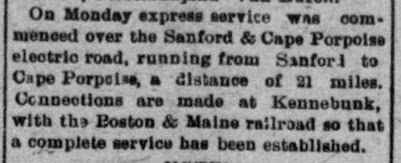




























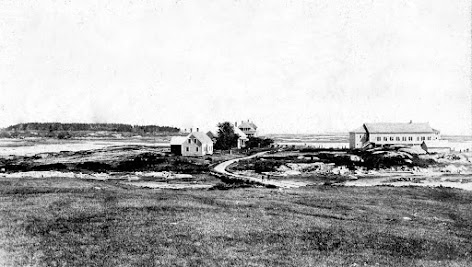





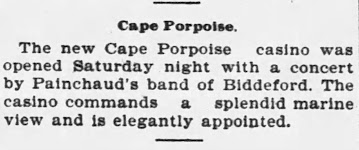


























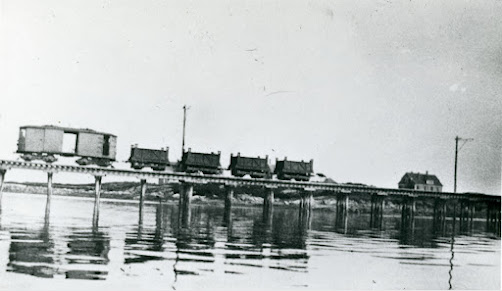





















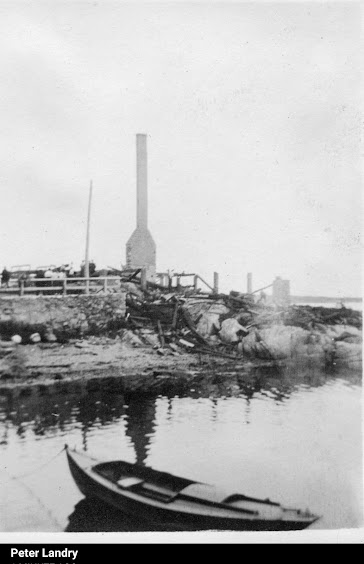











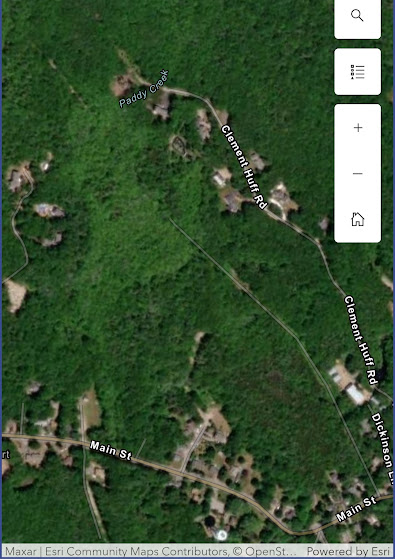




No comments:
Post a Comment
Note: Only a member of this blog may post a comment.